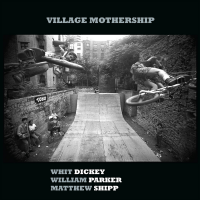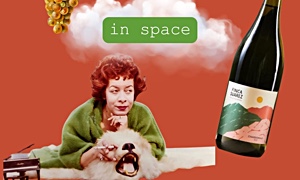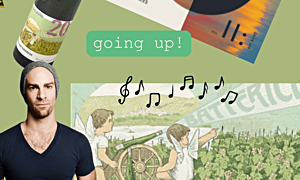Home » Jazz Articles » Jazz & Juice » Tension: Riesling meets Eric Dolphy
Tension: Riesling meets Eric Dolphy
Tension
The word tension comes from a root meaning "to stretch." The best literal examples of tension in application are musical—an instrument such as the bass, violin or harp requires tension on the strings in order to produce sound. Nothing resonates without this force that pulls from one end to the other. Tension, for listeners, is equally important to carry us through an entire musical piece. The combination of harmonic, rhythmic, and melodic activity keeps us expectant and taught, pulling us to the next moment of sound.In the world of wine, tension describes a wine that has an element, usually acidity, that pulls the wine through the tasting experience. Frequently, "tension" is used with terms like "linear" to describe energetic acidity that gives the wine length and persistence. It's the acid that keeps ripe fruit from acting like a loosened string on the palate, and allows flavors to journey and resonate as we taste.
The Jazz
 Eric Dolphy's explosive, all-too-brief career helped form and to go beyond many styles of jazz of his time; straight ahead, avant-garde, third stream. His versatility as a side man (with John Coltrane, Charles Mingus & Gunther Schuller, among others,) and skills as a multi-instrumentalist (most notably alto saxophone, flute, and bass clarinet) were exceptional. His extraordinary abilities and vision coalesced into a singular, unique sound that broke new ground in the music as both a musician and leader. His work was controversial, adventurous, and utterly distinctive.
Eric Dolphy's explosive, all-too-brief career helped form and to go beyond many styles of jazz of his time; straight ahead, avant-garde, third stream. His versatility as a side man (with John Coltrane, Charles Mingus & Gunther Schuller, among others,) and skills as a multi-instrumentalist (most notably alto saxophone, flute, and bass clarinet) were exceptional. His extraordinary abilities and vision coalesced into a singular, unique sound that broke new ground in the music as both a musician and leader. His work was controversial, adventurous, and utterly distinctive. This month, we're listening to "Something Sweet, Something Tender" which features Dolphy on bass clarinet. On this idiosyncratic choice of instrument, and certainly on the alto saxophone for which he was recognized, Dophy's sound is arresting. He immediately brings one to attention, but does so beautifully. On this seminal album, "Out to Lunch," his talents and personal perspective are on full display, accompanied by a quartet of the liner note's correctly identified "young masters": Freddie Hubbard on trumpet, Richard Davis on bass, Tony Williams on drums and Bobby Hutcherson on vibes.
In a slower ballad, tension is essential. At this tempo, a tune could feel plodding and without energy to pull the listener forward. Here, unexpected instrumental choices such as bass clarinet, and the murky bowing of the bass creates intrigue and anticipation. The main melody has a gorgeous generous shape punctuated by the sudden ratatat of sixteenth notes that call us to attention. Davis' rhythmic attack maintains an underpinning of activity, while the trumpet luxuriates in the angular leaps of the line. Punctuating the proceedings, the vibes add mystery and space.
Hear the melody linger in unexpected places and build tension. Breaks in the melodic line aren't simply resting, but reaching into the next phrase with intention and energy. This tension has a great deal to do with the playing of Hubbard and Dolphy, yet is also imbued in the concept of the tune.
The bass strings are bowed beautifully by Davis in the final unison as Dolphy sings the melody on bass clarinet. Even the way the tune ends promises more, keeps us alert and waiting for the next moment in the album.
The Juice
Choosing a song called "Something Sweet...." to pair with a Riesling invites the common misconception that Rieslings are all sweet. However our example of the month is, in fact, bone dry and full of the best kind of tension that easily pulls one through an entire meal (or perhaps, in my case, an entire bottle.) Riesling's naturally high acidity is what makes it such a versatile grape to vinify, and this example so refreshing. Hailing from the extremely steep slopes of Germany's Mosel valley, Immich Batterieberg's "Escheberg" Riesling 2019 comes from the secondary grapes from a quartet of incredible vineyard sites, each worthy of their own separate bottlings. Each site brings its own particular nuance, but they come together here in a stunning ensemble. There's an edgy minerality, an underripe citrus fruit character, a touch of that petrol on the nose, and a nearly crystalline presence that's almost luminescent in character. Although some wines with high acid are described as direct or bracing, this wine's tension underpins its texture as it spreads around the palate—both enveloping and energizing.
Hailing from the extremely steep slopes of Germany's Mosel valley, Immich Batterieberg's "Escheberg" Riesling 2019 comes from the secondary grapes from a quartet of incredible vineyard sites, each worthy of their own separate bottlings. Each site brings its own particular nuance, but they come together here in a stunning ensemble. There's an edgy minerality, an underripe citrus fruit character, a touch of that petrol on the nose, and a nearly crystalline presence that's almost luminescent in character. Although some wines with high acid are described as direct or bracing, this wine's tension underpins its texture as it spreads around the palate—both enveloping and energizing. Notably, this producer doesn't take part in the Prädikat system of labeling commonly seen on German wine bottles, which is a system of organization based on grape ripeness levels (more on this in the podcast.) The winemaker, Gernot Kollman, prefers to think of his wines as expressions of a vineyard, not to be framed in terms of ripeness or sweetness. This month, both our jazz and juice refuse to be easily categorized—much to our delight they each followed their own singular paths.
What's Next
In the podcast, I'm looking forward to sharing more about Eric Dolphy with a special guest who is a multi-instrumentalist and a trailblazer himself, and to exploring the Mosel region in Germany in a little more depth. Till then!Tags
Jazz & Juice
Eric Dolphy
Kristen Lee Sergeant
Eric Dolphy
John Coltrane
Charles Mingus
:Gunther Schuller
Freddie Hubbard
Richard Davis
Tony Williams
Bobby Hutcherson
PREVIOUS / NEXT
Support All About Jazz
 All About Jazz has been a pillar of jazz since 1995, championing it as an art form and, more importantly, supporting the musicians who make it. Our enduring commitment has made "AAJ" one of the most culturally important websites of its kind, read by hundreds of thousands of fans, musicians and industry figures every month.
All About Jazz has been a pillar of jazz since 1995, championing it as an art form and, more importantly, supporting the musicians who make it. Our enduring commitment has made "AAJ" one of the most culturally important websites of its kind, read by hundreds of thousands of fans, musicians and industry figures every month.






















